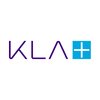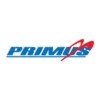Filter interviews by
Caepro Technologies Interview Questions and Answers
9 Interview questions
The equations governing CFD are based on fundamental laws of physics.
Based on conservation of mass, momentum, and energy
Navier-Stokes equations are fundamental in fluid dynamics
Incompressible flow assumes constant density
Reynolds-averaged Navier-Stokes (RANS) equations are commonly used
Relaxation factor in CFD controls the rate at which the solution converges towards the final solution.
Relaxation factor is a parameter used in iterative methods to control the rate of convergence.
A higher relaxation factor can speed up convergence but may lead to instability.
Conversely, a lower relaxation factor can improve stability but may slow down convergence.
Optimal relaxation factor varies depending on the p...
Y+ is a dimensionless wall distance used in CFD to determine the appropriate mesh resolution near the wall.
Y+ is used to ensure accurate modeling of boundary layer flow near walls.
It is calculated as the ratio of the distance from the wall to the first cell center to the wall shear stress.
Y+ values less than 1 indicate a viscous sublayer, while values greater than 30 indicate a fully turbulent flow.
Properly resolv...
Boundary layer is the layer of fluid adjacent to a solid surface where the flow velocity changes from zero at the surface to the free stream velocity.
Boundary layer is a region in a fluid flow where viscous effects are significant.
It is characterized by a gradual increase in flow velocity from the solid surface to the outer flow.
The boundary layer thickness depends on the Reynolds number and the surface roughness.
...
Common turbulent models in CFD include k-epsilon, k-omega, and Large Eddy Simulation (LES).
k-epsilon model is widely used for industrial applications due to its simplicity and computational efficiency.
k-omega model is known for its ability to handle adverse pressure gradients and near-wall turbulence.
Large Eddy Simulation (LES) is used for resolving large-scale turbulent structures in high Reynolds number flows.
Re...
Steady state is when a system's variables do not change over time, while transient state is when variables change with time.
Steady state: system variables remain constant over time
Transient state: system variables change with time
Example: A cup of hot coffee cooling down to room temperature is a transient state process
Example: A refrigerator maintaining a constant temperature is a steady state process
The governing equations solved in CFD include the Navier-Stokes equations, continuity equation, and energy equation.
Navier-Stokes equations describe the motion of fluid substances.
Continuity equation ensures mass conservation within the fluid domain.
Energy equation accounts for the transfer of thermal energy within the fluid.
Other equations like turbulence models may also be solved depending on the simulation requ...
Aerodynamic refers to the study of the motion of air and other gases, while hydrodynamic refers to the study of the motion of liquids, primarily water.
Aerodynamics deals with the flow of air around objects, such as airplanes, cars, and buildings.
Hydrodynamics focuses on the behavior of liquids, including water, in motion, such as in rivers, oceans, and pipes.
Both fields are crucial in designing efficient vehicles,...
Mesh dependent test in CFD is a test to determine the sensitivity of the simulation results to changes in the mesh resolution.
Mesh dependent test involves running the CFD simulation with different mesh resolutions to see how the results vary.
It helps in assessing the accuracy and reliability of the simulation results based on the mesh quality.
The test is important to ensure that the simulation results are not heav...
Caepro Technologies Interview Experiences
1 interview found
I applied via Naukri.com and was interviewed before Nov 2023. There were 2 interview rounds.
(10 Questions)
- Q1. What is mean by boundary layer?
- Ans.
Boundary layer is the layer of fluid adjacent to a solid surface where the flow velocity changes from zero at the surface to the free stream velocity.
Boundary layer is a region in a fluid flow where viscous effects are significant.
It is characterized by a gradual increase in flow velocity from the solid surface to the outer flow.
The boundary layer thickness depends on the Reynolds number and the surface roughness.
There...
- Q2. What are the turbulent model used in CFD?
- Ans.
Common turbulent models in CFD include k-epsilon, k-omega, and Large Eddy Simulation (LES).
k-epsilon model is widely used for industrial applications due to its simplicity and computational efficiency.
k-omega model is known for its ability to handle adverse pressure gradients and near-wall turbulence.
Large Eddy Simulation (LES) is used for resolving large-scale turbulent structures in high Reynolds number flows.
Reynold...
- Q3. What is mean by aerodynamic or hydrodynamic?
- Ans.
Aerodynamic refers to the study of the motion of air and other gases, while hydrodynamic refers to the study of the motion of liquids, primarily water.
Aerodynamics deals with the flow of air around objects, such as airplanes, cars, and buildings.
Hydrodynamics focuses on the behavior of liquids, including water, in motion, such as in rivers, oceans, and pipes.
Both fields are crucial in designing efficient vehicles, stru...
- Q4. What is Mesh dependent test in CFD?
- Ans.
Mesh dependent test in CFD is a test to determine the sensitivity of the simulation results to changes in the mesh resolution.
Mesh dependent test involves running the CFD simulation with different mesh resolutions to see how the results vary.
It helps in assessing the accuracy and reliability of the simulation results based on the mesh quality.
The test is important to ensure that the simulation results are not heavily i...
- Q5. Difference between steady state and transient state?
- Ans.
Steady state is when a system's variables do not change over time, while transient state is when variables change with time.
Steady state: system variables remain constant over time
Transient state: system variables change with time
Example: A cup of hot coffee cooling down to room temperature is a transient state process
Example: A refrigerator maintaining a constant temperature is a steady state process
- Q6. Draw velocity and thermal boundary condition for outer flow ( flow over flat plate) and inner flow ( flow through pipe)
- Ans.
Velocity and thermal boundary conditions for outer flow over flat plate and inner flow through pipe.
Outer flow (flow over flat plate): Velocity boundary condition - free stream velocity parallel to the plate, Thermal boundary condition - constant temperature at the plate surface
Inner flow (flow through pipe): Velocity boundary condition - parabolic velocity profile, Thermal boundary condition - constant heat flux at th...
- Q7. Significance of relaxation factor in CFD?
- Ans.
Relaxation factor in CFD controls the rate at which the solution converges towards the final solution.
Relaxation factor is a parameter used in iterative methods to control the rate of convergence.
A higher relaxation factor can speed up convergence but may lead to instability.
Conversely, a lower relaxation factor can improve stability but may slow down convergence.
Optimal relaxation factor varies depending on the proble...
- Q8. Y+ significance in CFD?
- Ans.
Y+ is a dimensionless wall distance used in CFD to determine the appropriate mesh resolution near the wall.
Y+ is used to ensure accurate modeling of boundary layer flow near walls.
It is calculated as the ratio of the distance from the wall to the first cell center to the wall shear stress.
Y+ values less than 1 indicate a viscous sublayer, while values greater than 30 indicate a fully turbulent flow.
Properly resolving Y...
- Q9. What are governing equations is solved in CFD?
- Ans.
The governing equations solved in CFD include the Navier-Stokes equations, continuity equation, and energy equation.
Navier-Stokes equations describe the motion of fluid substances.
Continuity equation ensures mass conservation within the fluid domain.
Energy equation accounts for the transfer of thermal energy within the fluid.
Other equations like turbulence models may also be solved depending on the simulation requireme...
- Q10. On what laws governing equations are based?
- Ans.
The equations governing CFD are based on fundamental laws of physics.
Based on conservation of mass, momentum, and energy
Navier-Stokes equations are fundamental in fluid dynamics
Incompressible flow assumes constant density
Reynolds-averaged Navier-Stokes (RANS) equations are commonly used
(3 Questions)
- Q1. Why do you want to work for our company?
- Ans.
I am impressed by your company's innovative projects and collaborative work environment.
I admire the cutting-edge technology and projects your company is involved in.
I value the collaborative work environment that your company promotes.
I am excited about the opportunity to contribute to a team of talented professionals.
- Q2. Why are you looking for a job change?
- Ans.
Seeking new challenges and growth opportunities in a different work environment.
Looking for new challenges and opportunities for professional growth
Interested in exploring different work environments and cultures
Seeking a role with more responsibilities and learning opportunities
- Q3. Why should we hire you?
- Ans.
I have a strong background in CFD analysis, with experience in complex simulations and problem-solving skills.
I have a Master's degree in Mechanical Engineering with a focus on CFD
I have completed multiple projects involving CFD simulations for aerodynamics and heat transfer
I am proficient in using software like ANSYS Fluent and OpenFOAM
I have a track record of delivering accurate and timely results in CFD analysis
Top trending discussions






Interview questions from similar companies

I applied via Recruitment Consultant and was interviewed before May 2020. There were 3 interview rounds.
Interview Questionnaire
2 Questions
- Q1. DS and Algo questions based on DP and backtracking
- Q2. Clone linked list with random pointers.
- Ans.
Clone a linked list with random pointers.
Create a new node for each node in the original list.
Store the mapping between the original and cloned nodes in a hash table.
Traverse the original list again and set the random pointers in the cloned list using the hash table.
Return the head of the cloned list.
Interview Preparation Tips
Skills evaluated in this interview

I applied via Walk-in and was interviewed before Jul 2020. There were 3 interview rounds.
Interview Questionnaire
1 Question
- Q1. Egerly they asked questions about your inner confidence of tha job seekers
Interview Preparation Tips

I applied via Referral and was interviewed in Feb 2020. There were 6 interview rounds.
Interview Questionnaire
1 Question
- Q1. I am not allowed to reveal
Interview Preparation Tips
Some tips for software engineer interview
1. Please prepare to do competitive programming like use leetcode algoexpert hacker rank
2. Some of the important areas are string problems dynamic programming stack based and tree based
3. There can be design round and interesting questions may be encountered

I applied via Naukri.com and was interviewed in Jun 2021. There was 1 interview round.
Interview Questionnaire
1 Question
- Q1. Program we're asked based on html
- Ans.
This question involves creating a program using HTML to demonstrate web development skills.
Understand the structure of an HTML document: <html>, <head>, <body>.
Use semantic HTML elements like <header>, <footer>, <article> for better accessibility.
Incorporate CSS for styling and JavaScript for interactivity.
Example: Create a simple webpage with a title, a paragraph, and a button that ...
Interview Preparation Tips

Senior Associate Interview Questions & Answers
Contizant Technologiesposted on 28 Oct 2022
I applied via Recruitment Consulltant and was interviewed before Oct 2021. There were 3 interview rounds.

(3 Questions)
- Q1. Normal introduction was asked
- Q2. Description of the previous role
- Q3. Roles and responsibilities
Not applicable , this was final round
Interview Preparation Tips

(1 Question)
- Q1. Difference between absolute xpath and relative xpath
- Ans.
Absolute xpath specifies the complete path from the root element to the desired element, while relative xpath specifies the path relative to the current element.
Absolute xpath starts with a single forward slash (/) and is more specific.
Relative xpath starts with a double forward slash (//) and is more flexible.
Absolute xpath is more prone to breaking if the structure of the page changes.
Relative xpath is easier to main...
Skills evaluated in this interview

Software Engineer Interview Questions & Answers
Contizant Technologiesposted on 7 Jun 2024
(2 Questions)
- Q1. Spark architecture.
- Q2. Narrow and wide transformations

I applied via Company Website and was interviewed in Apr 2022. There were 2 interview rounds.

Mcq
Interview Preparation Tips
- C
- C++

I applied via Recruitment Consulltant and was interviewed in Jan 2024. There were 5 interview rounds.
(1 Question)
- Q1. Why would you want this role?
- Ans.
I am passionate about analyzing data and identifying opportunities for business improvement.
I have a strong background in data analysis and problem-solving.
I enjoy working with stakeholders to understand their needs and find solutions.
I am excited about the opportunity to use my skills to drive business growth and success.
Speed to the speed advantage id Castlegate
Behavior questions, around collaboration ownership past sucess and failures
Another review of shipment speed
(1 Question)
- Q1. Final questions from amanger
Caepro Technologies Interview FAQs
Tell us how to improve this page.
Interview Questions for Popular Designations
Overall Interview Experience Rating
based on 2 interview experiences
Difficulty level
Duration
Interview Questions from Similar Companies
Caepro Technologies Reviews and Ratings
based on 14 reviews
Rating in categories
|
CFD Engineer
8
salaries
| ₹4 L/yr - ₹5.6 L/yr |
|
Design Engineer
7
salaries
| ₹2 L/yr - ₹6 L/yr |
|
CAE Analyst
6
salaries
| ₹3.2 L/yr - ₹7 L/yr |
|
Senior Design Engineer
4
salaries
| ₹9.6 L/yr - ₹9.9 L/yr |
|
CFD Analyst
4
salaries
| ₹3.2 L/yr - ₹4 L/yr |

Amazon Sellers Services

Primus Global Technologies

GAMMON INDIA

Magneti Marelli Motherson Auto System
- Home >
- Interviews >
- Caepro Technologies Interview Questions








